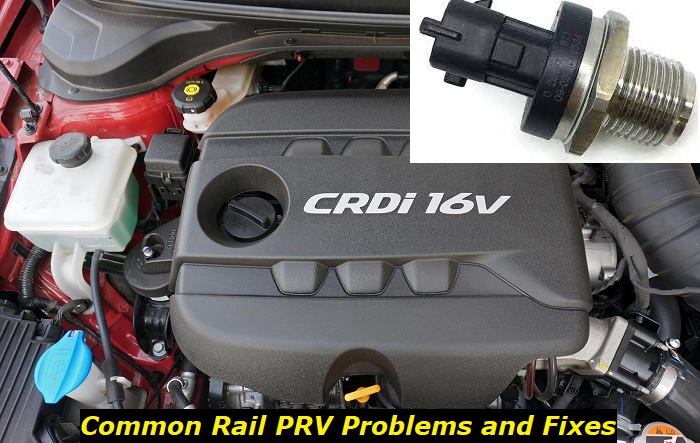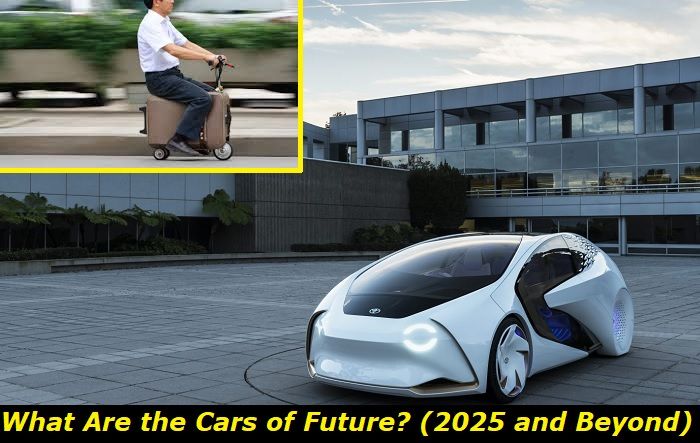A common rail pressure relief valve (CRPRV) is a mechanism in diesel engines that regulates fuel pressure in cars that use the common rail system for fuel injection. The CRPRV prevents fuel pressure spikes in the common rail. It is a small part that, if faulty, causes performance and diagnostic issues.
Internal engine problems highlights
- Level of importance:High
- Commonreasons:Mileage, poor maintenance, improper use, physical damage
- DIY inspection:Possible but may be complicated
- DIY repair:Possible, in some cases
- Price for repair:$250 - $1,500
- Can you drive?Depends on the issue
- Ways to fix:Locate the problem, outline possible fixes, replace or repair the worn-out parts

Common-Rail Direct Injection and Common-Rail Pressure Relief Valve
Fuel injection in cars is a mechanism for introducing fuel into internal combustion engines. A fuel injection system delivers fuel to the engine's cylinders under high pressure for combustion. While there are alternative methods to deliver fuel to the car's cylinders, such as the carburetor, injection systems in modern diesel-powered engines use a fuel injection design. One such fuel injection design is Common Rail Direct Injection (CRDI).
Many modern diesel automobiles utilize the CRDI system. Older fuel injection systems were cam-driven, so the fuel injection pressure depended on the engine's speed. Low engine speed would result in low fuel pressure and inefficient combustion. The development of CRDI intended to remedy this problem.
Development programs for CRDI began in the 1960s. By the 1980s and early 90s, its development looked towards achieving a comfortable driving experience comparable to gasoline-powered cars. Another motivation was ensuring future emission limit compliance and providing top-notch fuel efficiency. In the 1990s, manufacturers adapted CRDI for automobiles.
CRDI includes a common line or rail that supplies fuel to each injector at a significant pressure. In diesel cars, CRDI can inject fuel at a pressure of up to 20000 Pounds Per Square Inch (PSI) and sometimes up to 29000 PSI. Furthermore, it is an electronically controlled fuel injection system. It injects fuel with the high-pressure pump and the Engine Control Unit (ECU).
As a result, CRDI is many times more precise than traditional injection systems. Further, the process allows for higher fuel atomization, a better air-fuel mixture, and more reliable combustion.
The Common Rail Pressure Relief Valve (CRPRV) is a component attached to the CRDI that regulates fuel pressure. The CRPRV, also known as the fuel pressure relief regulator or cascade valve, attaches to the common rail and connects to the fuel tank. So, if the fuel pressure in the CRDI becomes excessive, the CRPRV releases the fuel back into the fuel tank.
The critical point to remember about the CRPRV is that it prevents damage to the engine by ensuring fuel pressure does not exceed safety limits.
We should mention that the CRDI process of fuel injection is more complicated than we have described. For this article, the entirety of that process is not our concern.
Causes of a Faulty Common-Rail Pressure Relief Valve
Wear and tear, contamination from particles and debris, and overpressure can cause the CRPRV to become faulty. While wear and contamination are straightforward concepts, you might wonder what overpressure is.
Overpressure in CRDI occurs when systems designed for a particular PSI exceed the set limit, forcing the CRPRV open. Let us use the example of a CRDI designed to handle fuel injection at 23000 PSI. If fuel pressure increases to 26000 PSI, there is a high chance the CRPRV forces open and releases that excess pressure into the return system.
The CRPRV functions to handle such cases of overpressure, but it cannot manage such situations many times without wear. At most, the CRPRV can handle one or two instances of overpressure before it gets soggy and forces open at even lower PSIs than the CRDI's spec.
Using our example, if overpressure, wear, or contamination weakens the CRPRV, fuel pressure lower than the 23000 PSI the system should handle might force open the valve.
Detecting overpressure, wear, or contamination is only possible via physical inspection or a diagnostic tool. Yet, some symptoms and signs could suggest a potential issue with the CRPRV in your car's engine. We discuss them below.
Symptoms of a Faulty Common-Rail Pressure Relief Valve
1) Fuel Leaks
Over time, car parts wear and tear. As such, the spring in the CRPRV's diaphragm can lose tightness as time passes. Besides natural wear, overpressure could lead to a weakening of the CRPRV.
If the CRPRV gets damaged, a possible symptom is a leakage along the fuel lines or parts of the engine. If you notice fuel leaks of any kind, consult your auto dealer immediately, as this particular symptom could cause a fire or lead to an explosion.
2) Check engine light is on
An illuminated check engine light means one of the engine sensors has communicated to the ECU that an issue needs inspection. Like a fuel leak, a check engine light could indicate a problem with one of many components. For example, the transmission system, ignition system, air-fuel ratio, broken gas cap, vacuum leak, malfunctioning battery, etc., could trigger the check engine light.
Still, the CRPRV's failure to manage or regulate excess fuel pressure in the common rail could lead to the ECU illuminating the check engine warning light. However, with several possible causes for the engine light to come on, we recommend replacing the CRPRV only if diagnosis and inspection show it is the culprit.
3) Reduced Fuel Efficiency
A significant reason for the development of CRDI was to improve the fuel economy of diesel-powered vehicles.
On fuel efficiency, the common rail system of fuel injection has advantages over other fuel injection mechanisms. Thus, your car may lose the benefits of CRDI if a faulty CRPRV fails to regulate fuel pressure within it.
Hence, if you notice any significant increase in fuel consumption, you should get it checked out. A faulty CRPRV could cause reduced mileage.
4) Difficulty starting the engine
There are many reasons why a diesel-powered car engine fails to start, and a faulty CRPRV is one of them. Supposing the CRPRV opens up at low PSIs, the engine may not get adequate fuel required for combustion into the cylinders. So also, if combustion is not successful, the engine may crank and shake without starting.
5) Error/Fault Codes
Error codes detectable via a diagnostic tool could be symptoms of a faulty CRPRV. If the diagnostic tool detects errors relating to low or high fuel pressure, there is a possibility that the CRPRV has issues.
Some other symptoms of a faulty CRPRV include; excessive smoking, poor driveability, power loss, and reduced acceleration.
Diagnosing a Faulty Common-Rail Pressure Relief Valve
As a general rule, we prefer that experts diagnose car problems. Even so, we will consider two ways to diagnose a fault with the CRPRV.
1) Using a scan tool
If you have a diesel-powered engine, your car likely has an Onboard Diagnostic II (OBD2) port for interfacing with the car's computer system. Some vehicles with OBD2 can also connect to the scan tool via Bluetooth or WIFI.
Generally, the various sensors placed within the car's engine send signals to the ECU about the functional state of components. With the aid of OBD2, the scan tool, through error codes, can point out problems with certain parts of the car.
For error codes relating to the CRDI and CRPRV, look for those relating to the fuel rail system and fuel pressure. For example, in a Duramax V8 engine, P0087 or P1093 error codes suggest a problem with the CRDI or CRPRV. The code P0087, for instance, indicates that the fuel pressure is below specifications. Remember, these error codes relate to cars with a particular engine type. Error codes for your vehicle might be different.
2) Visual/physical inspection
You can also detect problems with the CRPRV manually. Manual diagnosis will involve a physical engine inspection for visual or functional issues with the CRDI and CRPRV. If you lack expert knowledge of engines, you might not know what to look for, making this a futile exercise.
Solutions
A damaged CRPRV needs replacing. Depending on the specs of your car, a replacement valve can be cheap. Furthermore, if performed by an expert and depending on the vehicle, the replacement procedure might be easy and quick. Other cars might take longer and have more complexities, such as removing the intake.
Notably, it would be best if you torqued the replacement valve to meet specifications and avoid loose installation of the CRPRV. To effectively regulate fuel pressure in the rail, ensure you tightly fit the CRPRV.
Conclusion
So far, we have looked at the CRPRV that helps regulate fuel pressure within the CRDI and its problems. Furthermore, we got an overview of the CRDI, how it works, and the function of the CRPRV. Then we identified symptoms, causes, and solutions to issues with CRPRV.
Addressing CRPRV problems is pertinent as they could impact your automobile's engine, drivability, emissions, and fuel efficiency. Additionally, symptoms that signify a problem with the CRPRV could occur because of some other problem. So, get the help of an expert to diagnose and repair the CRPRV should you notice any of the symptoms mentioned.
About the authors
The CarAraC research team is composed of seasoned auto mechanics and automotive industry professionals, including individuals with advanced degrees and certifications in their field. Our team members boast prestigious credentials, reflecting their extensive knowledge and skills. These qualifications include: IMI: Institute of the Motor Industry, ASE-Certified Master Automobile Technicians; Coventry University, Graduate of MA in Automotive Journalism; Politecnico di Torino, Italy, MS Automotive Engineering; Ss. Cyril and Methodius University in Skopje, Mechanical University in Skopje; TOC Automotive College; DHA Suffa University, Department of Mechanical Engineering






Add comment